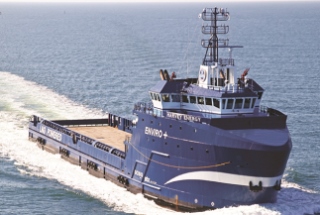The tumble in oil prices over the past year was the main catalyst behind the sale of Gulf Coast Shipyard Group to Harvey Gulf International Marine (HGIM).
“It was a combination of things,” said John Dane III, now the former president and CEO of Gulfport, Miss.-based Gulf Coast Shipyard. “Our majority partner was looking to sell their share of the business after the downturn in oil prices, and the rest of us went along with that.” The sale price was not disclosed.
“I was kind of relieved. I’ve been doing this for 41 years,” said Dane. “We saw an opportunity to sell to [HGIM’s chairman and CEO] Shane [Guidry] and the Jordan group.” The Guidry family and New York-based private equity firm The Jordan Company acquired HGIM in 2008. The Gulf Coast purchase marks HGIM’s first move into the shipyard business.
Gulf Coast's majority partner, Littlejohn & Co., a Greenwich, Conn.-based private equity firm, invested in Gulf Coast back in May 2013. In a statement announcing the investment, Littlejohn’s managing director Edmund J. Feeley said that Gulf Coast Shipyard had a strong backlog of orders, "and oil and gas drilling and production activity is expected to remain strong with demand for vessels serving this industry expected to continue.” When oil and gas activity weakened, Littlejohn wanted out.
As a result of the sale, HGIM has launched a new affiliate, Harvey Shipyard Group, to manage its new shipbuilding assets — Gulf Coast Shipyard in Gulfport, Miss., and Trinity Yachts, New Orleans.
Gulf Coast Shipyard is building the nation’s first LNG OSVs for the offshore market for Harvey Gulf. The first LNG OSV was delivered in February. Based on a design by Vard Marine, the 310'×64', 5,200-dwt Harvey Energy, the first LNG-burning OSV in North America, was custom-designed to take advantage of LNG’s low cost while minimizing the fuel’s technological challenges. It’s also the first OSV certified to the new American Bureau of Shipping ENVIRO+ classification. Harvey Gulf is investing $350 million to construct its dual-fuel fleet
“We feel LNG vessels of all sorts and sizes are the future of the business, and owning the yard makes sense from where Harvey is today and wants to be tomorrow,” Guidry said in an email.
HGIM now faces the same challenges that the previous shipyard owners did, but Guidry said they are up to it. “Our plan is to manage our way through this downturn while emerging as a continued industry leader in the LNG vessel space,” he wrote.
In July, HGIM plans to open a marine fueling station at Port Fourchon, La., to bring LNG as a marine fuel to the offshore and inshore industry. HGIM’s $25 million first construction phase will be capable of fueling Harvey Gulf’s fleet of dual-fuel OSVs and will accommodate the growing U.S. fleet of over-the-road vehicles operating on safe, efficient LNG.
Harvey Gulf said it expects the Gulf Coast Shipyard acquisition to result in an expansion of operations in Gulfport and New Orleans as it continues to bring innovative dual-fuel ship design, engineering and construction to its marine transportation industry customers.




